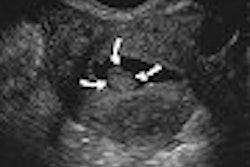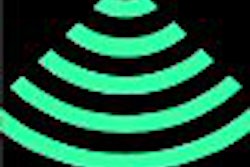SAN FRANCISCO - Orthopedic imaging specialists may worship at the altar of MRI, but ultrasound can produce an equally powerful revelation in the musculoskeletal system, according to a presenter at the American Osteopathic Association meeting.
"Ultrasound is giving us the dynamic view of the muscles, tendons, and musculoskeletal structures versus a static image of CT, plain films, or MRI. There's a huge difference that you are going to find (with ultrasound)," Dr. Richard Hull said in a talk on Tuesday. The session was co-sponsored by the American College of Osteopathic Sclerotherapeutic Pain Management.
But Hull, who is with Preferred Medical Associates in Iola, KS, cautioned his fellow osteopaths that mastering sonography is not as simple as turning on the machine, picking up the transducer, and miraculously producing beautiful images.
"Ultrasound is a technique. First, you have to know your navigation. Second, you have to know your position with your transducer. Then you are using the gel, and the gel is very slippery. Until you learn to stabilize your hand, relax, and learn to use the transducer, you will have some problems with obtaining the image you want," he said.
But that can change with practice, he pointed out. Hull offered a primer on musculoskeletal ultrasound and the unique opportunities it offers for soft-tissue imaging.
US basics
Hull began by broadly outlining some ultrasound pearls and pitfalls. As mentioned earlier, ultrasound allows the physician to image the area of interest in full range of motion.
"The higher the megahertz (MHz), the shallower (areas) you are going to see," Hull explained. "The lower the megahertz, the deeper the structures you are going to see. With most of these new machines, with a certain probe, you can vary the frequency by as much as 7 MHz so you have a lot more control of depth and focus."
Using compression while imaging can provide information on venous patency, synovial thickening, and tenderness, Hull said. Using contraction or strain can be used to evaluate musculotendinous or ligamentous structures.
According to Hull, there are some ultrasound quirks to bear in mind:
Anisotropic artifacts can occur when the transducer angle to the structure is something other than perpendicular. This can change a hyperechoic structure into a hypoechoic one.
Refractile shadows are seen at the edge of the curved structure or cortex.
Reverberation ratifications may be caused by foreign bodies, especially metallic or glass objects, creating a comet's tail. This can be an issue when imaging prosthesis, or metallic plates and screws.
"Ultrasound is very good on foreign bodies ... sometimes you can even see the entry point (of the foreign body). You can see the track right down through the subcutaneous tissue," Hull said. "Wood is probably the easiest thing to pick up on ultrasound, followed by glass, plastic, and metal. Metal will pick up, but it throws a sharp (comet's tail)."
Muscles, tendons, ligaments
On sonography, muscles appear as homogenous tissue and multiple fine parallel echo lines. They are generally less echoic than subcutaneous fat or tendons. Hull described a case of muscle herniation -- and more -- that was ultimately diagnosed on ultrasound.
"I had one patient, a 31-year-old woman, who had two years of severe, excruciating lateral leg pain under the area of the iliotibial vein, about four inches above her knee," he said. "The orthopedic surgeons that we sent her to couldn't find anything (with MRI). On the ultrasound, we found what looked to be a lipoma and a herniated muscle. We went in and took it out, and we ended up with a synovial sarcoma coming out with it."
Tendons are very hyperechoic. Hull warned that anisotropic artifacts are a problem with tendon imaging.
"In a tendon, you need to be perfectly perpendicular in the transverse plane of the tendon," he said. "If you angle your transducer a little too much, it can become hypoechoic and almost look like there is no tendon there just because of the angle of the transducer. You are bouncing too many of your sonographic reflections off."
Finally, extra-articular ligaments appear as hyperechoic, band-like structures. However, some ligaments, such as the lateral collateral ligament of the knee, can appear relatively hypoechoic. Ligaments should be imaged on the long axis, he said.
Bone and bursa
While the proximal surface of the bone cortex appears as a smooth, densely reflective line, bone itself interrupts the propagation of the ultrasound beam. The normal periosteum cannot be seen on ultrasound, Hull said, although visualization is possible when it is abnormal. The bursa's walls are thin and hyperechoic, and can merge with the surrounding fat.
As for the joint capsule, it is "indistinguishable on ultrasound from the periarticular ligaments. So it's all going to look like one structure right where they come together, wherever the periarticular ligament attaches onto the joint capsule," he said.
Hyaline cartilage and fibrocartilage
Due to its high water content, hyaline cartilage is very hypoechoic on ultrasound, Hull stated. Hyaline cartilage is also easily seen on x-ray. Fibrocartilage shows as a very thin structure. Hull said he found ultrasound particularly useful for imaging fibrocartilage tears in the labrum of the shoulder and hip.
"I have a patient, ... another physician, who had a labral tear. The MRI didn't pick it up, but we could pick it up on ultrasound," he said. "But in the hip, you are getting into deep enough structures so that you are going to have to go to a lower megahertz on the transducer head, down to 2.5 to 5 MHz."
Vessels
Vessels have an anechoic round center on a transverse scan. When a high-frequency probe is used, the intimal layer can be distinguished as a fine, hyperechoic line.
"Remember, veins are compressible and arteries are going to be pulsatile when they are in real-time ultrasound," Hull said. Veins may collapse under slight pressure of the probe, he added.
Nerves
Nerves appear as hyperechoic tubular structures. On transverse scans, nerves are hyperechoic and contain small, cyst-like formations. On longitudinal scans, nerve echostructure is fibrillar, similar to tendons. However, unlike tendons, nerves cannot be mobilized so anisotropy is less of an issue. Hull outlined the areas where upper- and lower-extremity nerves are best visualized on sonography.
"We can see the median nerve well in the forearm and wrist. We can see the radial nerve in the arm and the elbow. We can see the ulnar nerve in the elbow," he said. "We can see the sciatic nerve well in the thigh, and we can see the tibial and popliteal space fairly well. Those are fairly easy places to pick nerves up and look at them."
Fat and skin
Depending on the body part, skin thickness runs from 1.4 mm to 4.8 mm. It is generally thicker in men than women. Ultrasound cannot differentiate between the dermis and epidermis. "With the skin, you need to be using a high-frequency -- at least 10-MHz or more -- transducer to see it," Hull said.
The echogenicity and thickness of fat changes from patient to patient. On the whole, the subcutaneous tissue is hypoechoic and contains linear echoes that correspond to strands of connective tissue.
"Usually, the subcutaneous fat is a little more hypoechoic than the muscle underneath. The fibrous bands are not as parallel and organized," he said.
Equipment
Hull has been working with ultrasound for three years, and recently upgraded to a machine outfitted with Power Doppler capabilities. However, such high-end equipment isn't mandatory, he said.
"Power Doppler is an advantage in musculoskeletal ultrasound because it allows you to see vascularities very well. But just the black-and-white machine, which runs in the $12,000 to $15,000 range, would be adequate," he said.
Hull did highly recommend that novice sonographers consider scanners that offer a cine loop function. "It allows you to scroll back through frames," he said. "You may have seen (the right image), but by the time you hit the freeze button, you've lost it. Cine loop gives you a huge advantage in your technique."
By Shalmali Pal
AuntMinnie.com staff writer
November 11, 2004
Related Reading
Ultrasound of muscles adds vital information on rotator cuff condition, August 16, 2004
Sonography offers predictors of SST tears, February 25, 2004
Non-radiologists outpace radiologists in skyrocketing use of ultrasound, December 1, 2003
Copyright © 2004 AuntMinnie.com


















